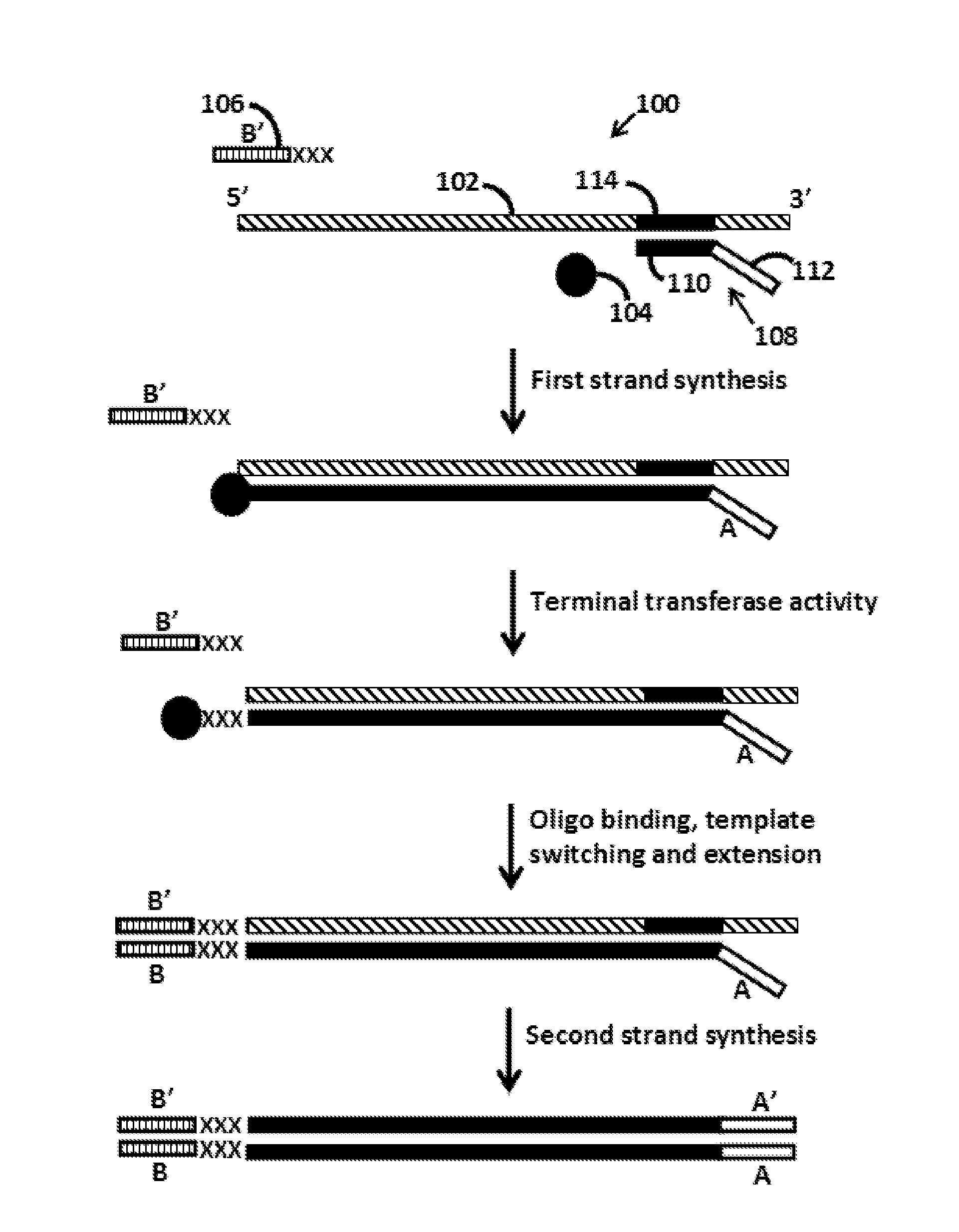Template switch-based methods for producing a product nucleic acid
a technology of product nucleic acid and switch-based methods, which is applied in the direction of enzymology, biochemistry apparatus and processes, transferases, etc., can solve the problem of difficulty in having different adapters at the different ends of nucleic acids
- Summary
- Abstract
- Description
- Claims
- Application Information
AI Technical Summary
Benefits of technology
Problems solved by technology
Method used
Image
Examples
Embodiment Construction
[0006]Provided are methods of producing a product nucleic acid. The methods include combining a template deoxyribonucleic acid (DNA), a polymerase, a template switch oligonucleotide, and dNTPs into a reaction mixture. The components are combined into the reaction mixture under conditions sufficient to produce a product nucleic acid that includes the template DNA and the template switch oligonucleotide each hybridized to adjacent regions of a single product nucleic acid that includes a region polymerized from the dNTPs by the polymerase. Aspects of the invention further include compositions and kits.
[0007]Before the methods of the present disclosure are described in greater detail, it is to be understood that the methods are not limited to particular embodiments described, as such may, of course, vary. It is also to be understood that the terminology used herein is for the purpose of describing particular embodiments only, and is not intended to be limiting, since the scope of the me...
PUM
| Property | Measurement | Unit |
|---|---|---|
| temperature | aaaaa | aaaaa |
| temperature | aaaaa | aaaaa |
| temperature | aaaaa | aaaaa |
Abstract
Description
Claims
Application Information
 Login to View More
Login to View More - R&D
- Intellectual Property
- Life Sciences
- Materials
- Tech Scout
- Unparalleled Data Quality
- Higher Quality Content
- 60% Fewer Hallucinations
Browse by: Latest US Patents, China's latest patents, Technical Efficacy Thesaurus, Application Domain, Technology Topic, Popular Technical Reports.
© 2025 PatSnap. All rights reserved.Legal|Privacy policy|Modern Slavery Act Transparency Statement|Sitemap|About US| Contact US: help@patsnap.com

